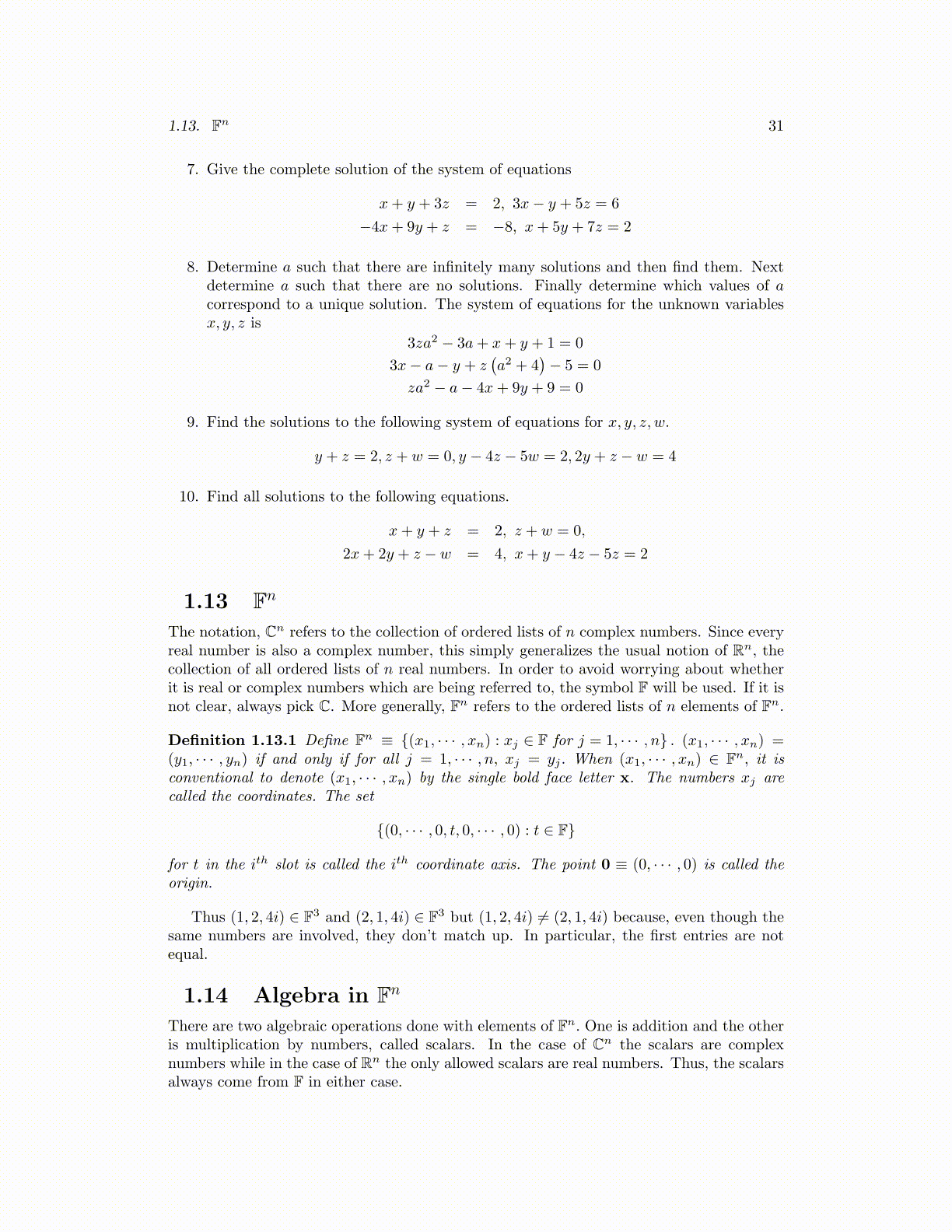
1.13. Fn 31
7. Give the complete solution of the system of equations
x+ y + 3z = 2, 3x− y + 5z = 6
−4x+ 9y + z = −8, x+ 5y + 7z = 2
8. Determine a such that there are infinitely many solutions and then find them. Nextdetermine a such that there are no solutions. Finally determine which values of acorrespond to a unique solution. The system of equations for the unknown variablesx, y, z is
3za2 − 3a+ x+ y + 1 = 0
3x− a− y + z(a2 + 4
)− 5 = 0
za2 − a− 4x+ 9y + 9 = 0
9. Find the solutions to the following system of equations for x, y, z, w.
y + z = 2, z + w = 0, y − 4z − 5w = 2, 2y + z − w = 4
10. Find all solutions to the following equations.
x+ y + z = 2, z + w = 0,
2x+ 2y + z − w = 4, x+ y − 4z − 5z = 2
1.13 FnThe notation, Cn refers to the collection of ordered lists of n complex numbers. Since everyreal number is also a complex number, this simply generalizes the usual notion of Rn, thecollection of all ordered lists of n real numbers. In order to avoid worrying about whetherit is real or complex numbers which are being referred to, the symbol F will be used. If it isnot clear, always pick C. More generally, Fn refers to the ordered lists of n elements of Fn.
Definition 1.13.1 Define Fn ≡ {(x1, · · · , xn) : xj ∈ F for j = 1, · · · , n} . (x1, · · · , xn) =(y1, · · · , yn) if and only if for all j = 1, · · · , n, xj = yj . When (x1, · · · , xn) ∈ Fn, it isconventional to denote (x1, · · · , xn) by the single bold face letter x. The numbers xj arecalled the coordinates. The set
{(0, · · · , 0, t, 0, · · · , 0) : t ∈ F}
for t in the ith slot is called the ith coordinate axis. The point 0 ≡ (0, · · · , 0) is called theorigin.
Thus (1, 2, 4i) ∈ F3 and (2, 1, 4i) ∈ F3 but (1, 2, 4i) ̸= (2, 1, 4i) because, even though thesame numbers are involved, they don’t match up. In particular, the first entries are notequal.
1.14 Algebra in FnThere are two algebraic operations done with elements of Fn. One is addition and the otheris multiplication by numbers, called scalars. In the case of Cn the scalars are complexnumbers while in the case of Rn the only allowed scalars are real numbers. Thus, the scalarsalways come from F in either case.